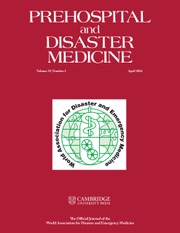No CrossRef data available.
Article contents
Policy and Legislation Enablers for Regionalization of the Global EMT Strategy
Published online by Cambridge University Press: 21 May 2025
Abstract
Research was conducted to identify needs for policy and legislation changes aimed at creating enabling environment for the implementation of the Emergency Medical Teams (EMT) Regional Action Plan 2024-2030 (RAP) to be facilitated by the WHO Regional European EMT Capability Hub (REECH).
Establishing commonalities and differences in EMT-related policy and legislation in countries representing different subregions of the WHO/Europe.
Informing the RAP policy and legislation framework development.
An analysis of the legal and normative frameworks governing EMTs in the selected countries – Spain, the UK, Georgia, Kyrgyzstan. The study involves reviewing legislative documents, policy frameworks, and operational guidelines that regulate EMTs’ integration into national health systems and emergency response coordination mechanisms.
Common characteristics of national legislation and policy frameworks include clear legal mandates, integration with national health systems, and alignment with national health policies. Differences identified: EMT governance and subordination (e.g., health sector in Georgia and UK, civil protection domain in Spain and Kyrgyzstan); patterns of international collaboration (e.g., stronger engagement with EUCPM for Spain, WHO guidance and support for Kyrgyzstan and Georgia).
The WHO European region’s diversity informs different approaches to policies and legislation aimed at supporting RAP. Enablers include clear EMT mandates and their integration with national health systems and international mechanisms. However, routes to these enablers vary due to differences in policies, health system design, and legislation adoption procedures. Future research will include more countries and a detailed list of research questions to identify patterns in legislation and policy enablers for achievement of the Global EMT goals.
Information
- Type
- Meeting Abstracts
- Information
- Copyright
- © The Author(s), 2025. Published by Cambridge University Press on behalf of World Association for Disaster and Emergency Medicine


